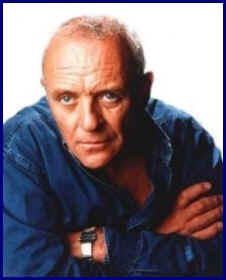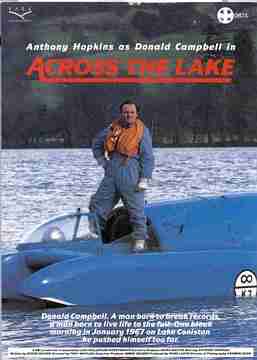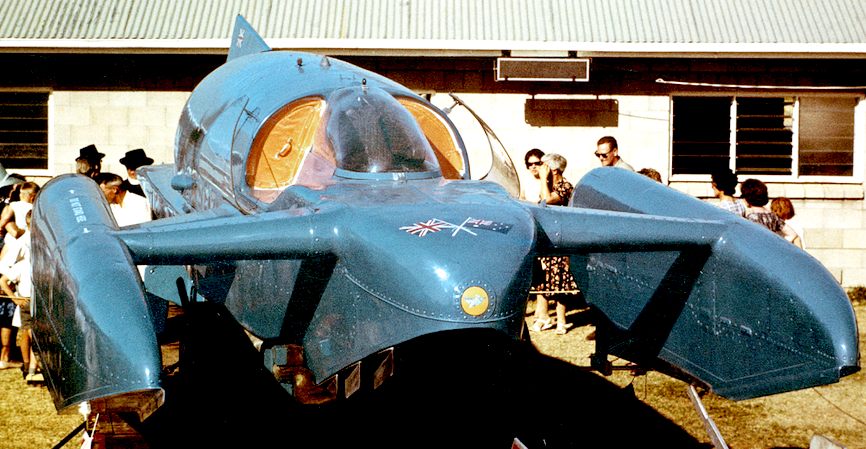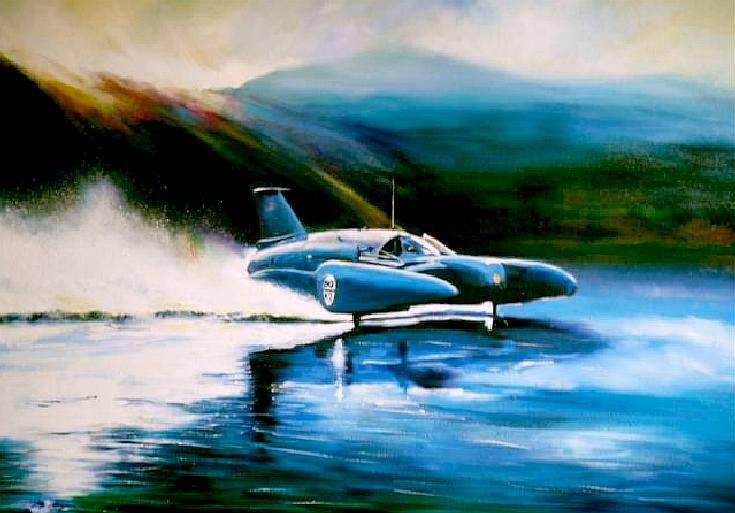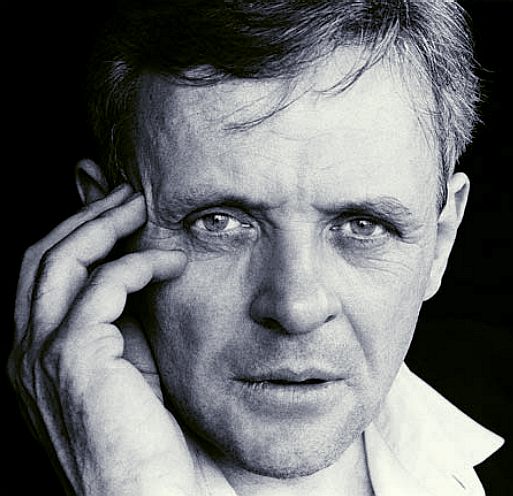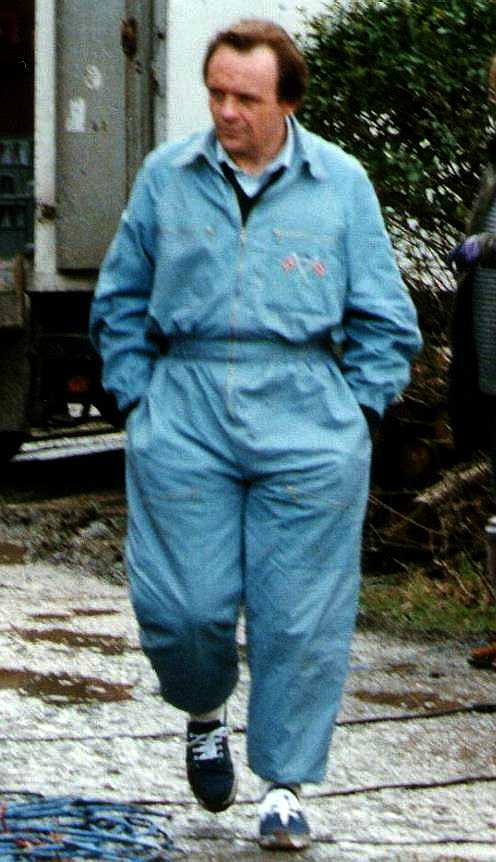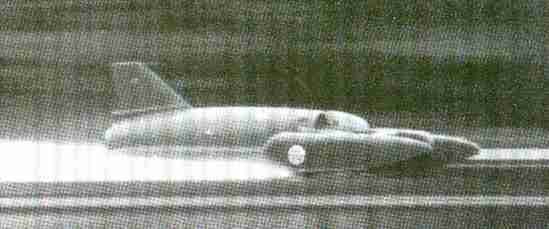|
ANTHONY HOPKINS
|
|
|
The part in the BBC production of across the lake was made for Sir Anthony, who, it is said, thinks fondly of Donald Campbell's land and water speed records - he says as much when playing Bert Munro is the World's Fastest Indian. Mr Hopkins is one of our favourite actors, no matter what part he is playing, but the part of a man on the edge racing around in a jet boat at suicidal speeds, is ideal for an actor who portrayed Hannibal Lecter in The Silence of the Lambs.
HISTORY
Anthony Hopkins father ran the family Bakery business, 'A. R. Hopkins and Son' at 151 Tanygroes St, Tai Bach, Port Talbot. It was obvious that Tony had little interest in the family business from an early age and spent most of his time alone, sketching or playing the Piano. He did not enjoy school and found it hard to fit in, his indifferent academic performance prompted his parents to move him from the Central school in Port Talbot, to go instead to boarding school, which they thought would be good for discipline and perk up his marks.
So in 1949 he was dispatched to West Monmouth school in Pontypool, a long way from home. He spent five miserable terms there and was then transferred closer to home to Cowbridge Grammar where he spent the next four years. He has talked often of his unhappiness of his time at Cowbridge, though his difficulties were of his own personal inadequacies rather than the school itself. He left there at 17, with 1 O level in English and then spent the next two years at the Cardiff College of Music and Drama.
Sir Anthony Hopkins
After graduation he took a job with the Arts Council before being called for National Service in 1958. He joined the Royal Artillery and became 23449720 Gunner Hopkins. Initially posted to Oswestry and then later Bulford Camp, Salisbury Plain where he spent close to two years 'typewriter punching' receiving 30 bob (£1.50) a week for his efforts. He left the Service as Bombardier (NCO) and returned to his parents new house in Laleston, Bridgend. They had sold the Bakery to Toffee manufacturer 'Lovells'.
Hopkins regained his interest in Drama and played several small parts in local plays before joining RADA. He graduated in 1963 and married his first wife Petronella Barker in 1967, they had a daughter - Abigail, Hopkins was working hard, in Theatres up and down the country and drinking heavily, the marriage did not last and they split a few years later. He continued to work himself hard and was in turmoil over abandoning his daughter - boozing sessions became more frequent but just a few months later he became involved with Jennifer Lynton whom later became his second wife. Hopkins was rarely out of work and as the years went on found himself less in the Theatre and more in the Movies. He began to spend more time in America than England and was becoming quite a star.
It was whilst he was in the states that he finally put an end to his drinking, he was quite a regular at AA meetings. His relationship with Jenni was beginning to struggle though - she preferred to live in England, he America - and he would like to go off on his own for months at a time. Always the loner. Enjoyed a solitary life. Jenni eventually moved back to England permanently, but would visit regularly. They would speak on the phone and remained friendly.
Anthony Hopkins plays Donald Campbell
Hopkins enjoyed roles in several big Hollywood blockbusters and eventually received acknowledgment for his work when he received the 1992 Oscar for Best Actor in 'Silence of the Lambs', now an American treasure. The following year saw him gain his 'Sir' title when he was knighted by the Queen of England in the 1993 New Years honours list. He was going from strength to strength, with each role he just seemed to get better and better. The nineties have been particularly good for Tony with roles like Hannibal Lecter, Stevens, Lewis and Nixon - each one gaining award nominations.
He is now permanently based in the Pacific Palisades area of LA, and in April 2000 he took out dual citizenship with America. The years of separation from Jenni eventually ended in divorce in June 2002. Tony then partnered with former Antiques Dealer Stella Arroyave and they married on 1st March 2003 in a private ceremony in Tony's Malibu home. The rest is pretty much history and he will surely be remembered as one of the great Actors for the parts he has already played, including the most splendid portrayal of Bert Munro and the story of the world's fastest Indian. We very much hope that is more to come. Keep up the good work Sir Anthony.
Name:
Phillip Anthony Hopkins
BBC TV DOCU-DRAMA 'ACROSS THE LAKE'
Tagline: 'Donald Campbell, a man born to break records, a man born to live life to the full. One bleak morning in January 1967 on Lake Coniston, he pushed himself too far.'
Synopsis: True story of Donald Campbell who in 1967 whilst trying to become the first person to go over 300Mph on water he crashed his famous 'Bluebird' at Coniston water, in the Lake District. He had achieved a run of 297Mph on the first leg, but turning around without refueling and not waiting for his wake to settle, he set off on the second leg. The boat lifted out of the water after exceeding a speed of over 300Mph, somersaulted and disintegrated on landing on the surface. His body was never found.
Donald was already a legend with the double, land and water speed records in the same year in Australia's Lake Eyre and Lake Dumbleyung in 1964.
Donald Campbell killed at 300mph
Campbell lifted his foot from the throttle about 3/10 of a second before passing the southern kilometre marker. As Bluebird left the measured kilometre, Keith Harrison and Eric Shaw in a course boat at the southern end of the measured kilo both noticed that she was very light around the bows, riding on her front stabilising fins. Her planing trim was no worse than she had exhibited when equipped with the Beryl engine, but it was markedly different to that observed by
Leo Villa at the northern end of the kilometre, when she was under full acceleration. Campbell had made his usual commentary throughout the run.
Instead of refuelling and waiting for the wash of this run to subside, Campbell decided to make the return run immediately. This was not an unprecedented diversion from normal practice, as Campbell had used the advantage presented i.e. no encroachment of water disturbances on the measured kilometre by the quick turn-a-round, in many previous runs. The second run was even faster once severe tramping subsided on the run-up from Peel Island (caused by the water-brake disturbance). Once smooth water was reached some 700 metres or so from the start of the kilometre, K7 demonstrated cycles of 'ground' effect hovering before accelerating hard at 0.63g to a peak speed of 328 mph (530 km/h) some 200 metres or so from the southern marker buoy. Bluebird was now experiencing bouncing episodes of the starboard sponson with increasing ferocity.
At the peak speed, the most intense and long-lasting bounce precipitated a severe decelerating episode (328 mph - 296 mph, -1.86g) as K7 dropped back onto the water. Engine flame-out then occurred and, shorn of thrust nose-down momentum, K7 experienced a gliding episode in strong ground effect with increasing angle-of-attack (AoA), before completely leaving the water at her static stability pitch-up limit of 5.2į. Bluebird then executed an almost complete somersault (~ 320į and slightly off-axis) before plunging into the water (port sponson marginally in advance of the starboard), approximately 230 metres from the end of the measured kilometre. The boat then cartwheeled across the water before coming to rest. The impact broke K7 forward of the air intakes (where Donald was sitting) and the main hull sank shortly afterwards. Campbell had been killed instantly. Mr Whoppit, Campbell's teddy bear mascot, was found among the floating debris and the pilot's helmet was recovered. Royal Navy divers made efforts to find and recover the body but, although the wreck of K7 was found, they called off the search, after two weeks, without locating his body.
You could not have cast a better actor to play Donald Campbell. Anthony Hopkins is superb and we think has a genuine interest in land and water speed records and the contenders. He also plays Burt Munro in The World's Fastest Indian.
The cause(s) of the engine flame-out cannot be established unequivocally. It could have been due to fuel starvation, damage to some ancillary structural element associated with engine function (following the worst bouncing episode), disturbance of the
air-stream into the intakes during the pitching episodes, or indeed a combination of all three. Further evidence of lost engine thrust may be seen in both cinematographic and still film recordings of the latter part of the run - as Bluebird left the water, jet exhaust from a functioning engine would have severely disturbed the water surface; no such disturbance or accompanying spray is evident. Also, close examination of such records show no evidence to the effect that the water brake was deployed.
The K7 first run 4 January 1967
Main Players: Sir Anthony Hopkins, Phyllis Calvert, Rosemary Leach Director: Tony Maylam Producer: Innes Lloyd Teleplay: Roger Milner
Based on the last few years of Donald Campbell's life.
DVD
BOXED SETS - Donald Campbell 4 Film Dvd Box Set
http://www.60fixings.co.uk/Shops/Products/Donald_01
Planet Hopkins | Thanks | Email Planet Hopkins | The World's Fastest Indian
The blue bird legend lives on. The classic lines of this racing car were inspired by Reid Railton and his designs for the Napier Lion and Rolls Royce engined Blue Bird LSR cars in the 1930s, the Blueplanet BE3 features instant battery recharging using the patent Bluebirdô cartridge exchange system under license from BMS. This LSR car is also solar assisted. She is designed for speeds in excess of 350mph over the flying mile using clean electricity. Imagine the spectacle of this beautiful vehicle speeding across the salt at Bonneville, or flying past on the sand at the Daytona or Pendine beaches. On 6 months notice, you can have this vehicle at your venue for drive bys and the like. Send us an email for a quote.
SIR MALCOLM CAMPBELL'S BLUE BIRDS
DONALD CAMPBELL'S BLUEBIRDS
|
|
|
This
website is Copyright © 2014 Bluebird Marine Systems Limited.
The names Bluebirdô, Solar Navigatorô,Blueplanet
BE3, Ecostar
DC50ô, and the blue bird in flight
|
